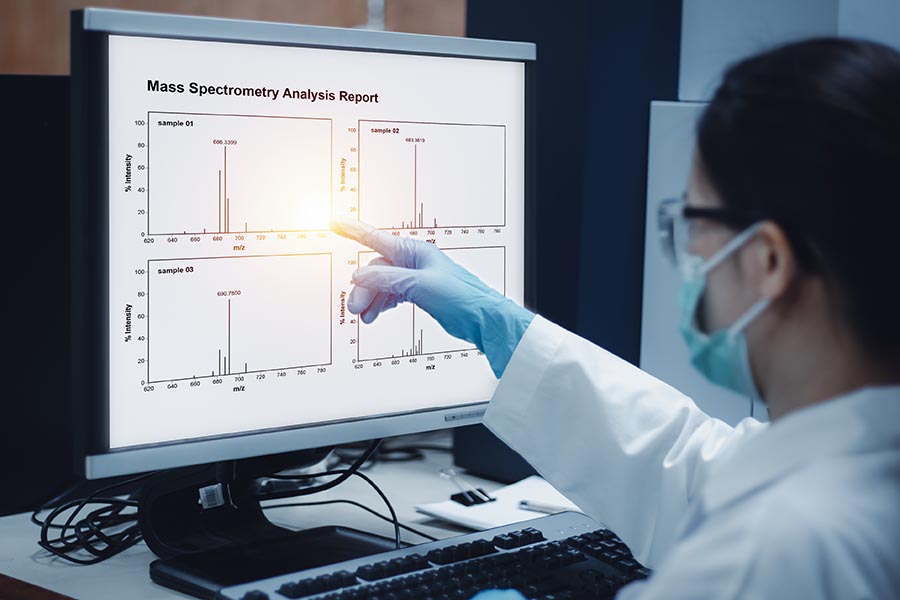Research Cores

A key component of our center are our research cores, which provide specialized facilities and services that are essential to supporting the center's research, its members and participants, as well as other institutional investigators.
Single-Cell and Spatial Transcriptomics Core
The Single-Cell and Spatial Transcriptomics Core aims to lower barriers of entry to single-cell and spatial transcriptomics technologies for center investigators and the broader UNMC community at a reasonable cost, offer consultation and technical assistance for training new users, enable users to analyze complex datasets, and remain adaptable to increase capacity and tools as needed.
Single-cell transcriptomics permits researchers to analyze tissue heterogeneity and complexity in disease states. These technologies add enormous value to research strategies aimed at discovering new disease specific cell surface markers, drug targets, molecular subtypes of tumors, etc. However, common single-cell-omics platforms are limited by high cost and access to robust computational analysis.
This core provides users with sufficient low-cost equipment, consultations, and computational tools to analyze single-cell and spatial transcriptomics data. Pioneering work in the Shalek group identified a lower-cost solution to droplet-based scRNA-seq called Seq-Well to generate high-quality libraries. We have successfully implemented Seq-Well at UNMC and generated high-quality data with unique biological insights. The core also provides subsidized access to spatial transcriptomics (MERSCOPE). In providing low-cost access to Seq-Well and MERSCOPE, the core allows for a range of options for high-resolution molecular profiling of tissue and cellular heterogeneity in complex systems.
Implementation of these tools at UNMC will enable investigators to develop innovative new research areas. This core aims to ensure that cutting-edge computational tools are available to users who want to conduct their own rigorous data analysis and anticipate and develop new low-cost “omics” technologies.
Organoids Core
The Organoids Core seeks to build on the success of the organoid component of the Phase 1 Target Validation Core. Multiple studies support the ability of organoids to faithfully retain the biological characteristics of the tissues from which they are derived, thus offering a unique system for molecular target discovery and development.
Importantly, patient-derived organoids retain the drug responses seen in the original patient, indicating that organoid culture conditions maintain the target profile and signaling networks of the originating tissue. Organoids also have the advantage that they can be genetically manipulated for target modulation and can be grown as xenografts that histologically mirror the originating normal or tumor tissue for both in vitro and in vivo testing.
This core is designed to facilitate the use of organoids by center investigators and the wider research community. Organoid-based research requires an established infrastructure, considerable expertise, and a substantial commitment of time and resources, which creates significant barriers to the adoption of organoid systems by individual laboratories.
By establishing organoids, as well as providing expertise, resources, reagents and training, this core aims to remove these barriers to the use of these valuable model systems. The core holds normal and tumor patient-derived organoids from colon, rectum and small intestine, liver, breast, pancreas and prostate as well as organoids from a number of mouse models, and plans to expand to additional tissues and diseases as demand is identified.
Probes, Inhibitors and PROTACs Core
The Probes, Inhibitors and PROTACs Core uses sophisticated chemistry and mass spectrometry for development of small molecules that facilitate molecular target discovery and development.
Genetic methods are routinely used to identify, develop, and validate molecular targets. These methods rely on altering the DNA or RNA sequences of the protein target. However, drug discovery relies on manipulating the function of the corresponding proteins using small molecules. Often the results obtained through these complementary strategies do not correlate. The incongruence associated with the results from these orthogonal approaches can be attributed to the complex biology that is dependent on multiple functions, such as enzymatic and scaffolding, associated with the protein target.
Modulating protein levels by altering the nucleic acids eliminates all the target protein functions. However small molecule modulators can be tuned to induce either domain specific effects (reversible or irreversible) or removal of the entire protein (PROTAC) with exquisite temporal control. These could be tagged with photoactivatable or fluorescent molecules, or biotin to enable target identification and validation, study mechanism of action, or characterize the associated interactome.
In addition to the design and synthesis of above types of small molecules, this core also provides scale-up services (mg to g) for additional experiments, such as in vivo validation of targets and hit-to lead optimization studies to generate structure activity relationship data. Mass spectrometry is used to characterize the impact of these compounds on the proteome through quantitative analysis of proteins and posttranslational or chemical modifications to validate mechanism of action and compensatory features that may contribute to drug resistance.